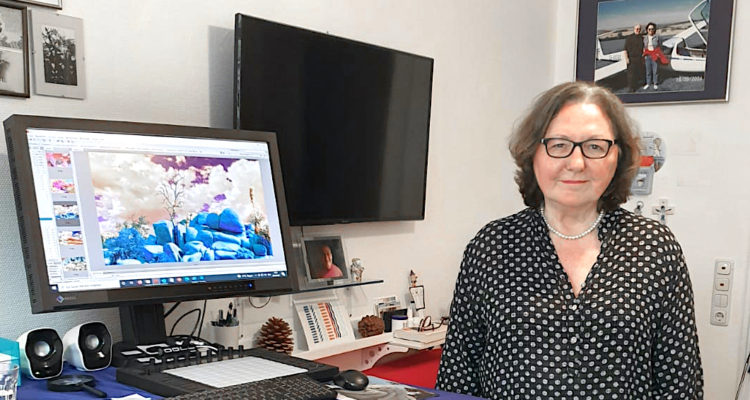“Shaping feelings…”
Paul Zimmerman in conversation with Marija Orlovic
Paul Zimmerman: How did you get interested in art?
Marija Orlovic: In my childhood it was the feeling of freedom and beauty that I had when I was outside in nature – or in church, because of the many beautiful pictures and the special light in the church. Later, as I grew up, I learned that this feeling was associated with the word “art”.
PZ: What is the most challenging aspect of your work?
MO: Shaping feelings. Art makes it possible to see, experience and grasp reality with “new” eyes. This creates a certain feeling that unites thinking and feeling and makes it tangible. I call this special experience “art” and I try to visualize it in my work.
PZ: What is your artistic process? How do you create your work?
MO: I photograph everything, I paint or draw, I shape things into new objects. I choose a physical basis for my work: a photo or an image that I have taken personally and that I transform into my images and / or into collages and multimedia pieces using the instruments of digital technology. It is a long process that allows everything to flow into my work that I know about what I have photographed or what experiences I associate with what is depicted.
PZ: Do you have any particular goal in mind when your start a new piece?
MO: No. At work I let myself be carried away by emotions and also I like to be distracted. In a certain sense it is an “emotional brainstorming” that leads me to my pictures.
PZ: What is the role of technology in your artistic process?
MO: A major role. I try to shape this special experience and feeling with the instruments of digital technology because I consider them to be contemporary and because digital technology makes it possible to make the colors really shine.

PZ: Has your practice changed over time?
MO: Yes. I started “classically” – which also made me very happy. But when I saw the possibilities of digital technology, I made the effort and started to learn.
PZ: Which artists are you most influenced by?
MO: American Pop Art, especially by Warhol. But also by German Expressionism.
PZ: How would you define yourself as an artist?
MO: I am always at the beginning. Never at the end of my artistic process.
PZ: What are you working on now?
MO: Multimedia. And I dream of audiovisual symphonies. And I dream of my gallery for digital and audiovisual art in Murter, Croatia.
PZ: How does the pandemic influence your work and sensibility?
MO: Pretty intense. I suddenly have time. I can feel and think things through to the end. That’s a little unusual for me. I’ve cleaned up. I learned a lot of new things.
